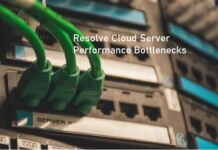Cloud server performance can vary across regions due to factors like network latency, server load, and data center proximity. For businesses relying on global cloud infrastructure, managing these variations is crucial to maintaining a seamless user experience. In this article, we will explore how to manage and resolve cloud server performance differences across regions, providing actionable steps that even beginners can use to improve server response times and reduce latency.
1. Assess Regional Performance Metrics
To manage cloud server performance variations effectively, start by assessing the performance metrics across different regions. Most cloud providers offer performance monitoring tools that track response times, server load, and latency by region. Tools like AWS CloudWatch, Google Cloud Monitoring, or Azure Monitor can help you identify regions experiencing issues.
- Step 1: Set up monitoring for each region where your cloud infrastructure operates.
- Step 2: Gather data on network latency, CPU usage, and disk I/O across regions.
- Step 3: Compare performance metrics and pinpoint regions with lower performance levels.
Monitoring tools provide critical insights into the factors impacting your performance, helping you target specific regions that need optimization.
2. Utilize Content Delivery Networks (CDNs)
One of the most effective ways to manage performance variations is through the use of Content Delivery Networks (CDNs). CDNs distribute your content across multiple servers in various regions, reducing the time it takes to deliver data to users.
- Step 1: Choose a CDN provider like Cloudflare, Akamai, or AWS CloudFront that suits your needs.
- Step 2: Configure the CDN to cache static content, such as images and scripts, across different regions.
- Step 3: Ensure the CDN automatically routes user requests to the nearest server location for faster response times.
Moreover, CDNs can drastically reduce latency and ensure content is delivered quickly, even in regions far from your main data centers.
3. Deploy Multi-Regional Cloud Servers
Another strategy to resolve regional performance variations is to deploy servers in multiple geographic regions. This practice, known as multi-regional deployment, ensures that users access cloud servers from locations closest to them, reducing latency and improving overall performance.
- Step 1: Identify key regions where your users are located.
- Step 2: Use your cloud provider’s services, such as AWS Regions or Google Cloud Zones, to deploy servers in these areas.
- Step 3: Configure load balancers to distribute traffic across your regional servers evenly.
In addition, load balancers play a critical role in directing traffic to the server with the least load, preventing bottlenecks in any one region.
4. Optimize DNS for Regional Performance
Optimizing your Domain Name System (DNS) settings for regional performance is another critical step. DNS directs users to the closest available server, and optimizing it ensures that users are routed to the most efficient server in their region.
- Step 1: Use a global DNS service, like AWS Route 53 or Google Cloud DNS, that supports geo-location routing.
- Step 2: Configure DNS records to route users to servers based on their geographic location.
- Step 3: Test your DNS configuration using tools like DNSChecker to ensure proper routing and minimal latency.
However, poor DNS configuration can increase latency, so it is essential to ensure the routing is optimized.
5. Implement Auto-Scaling Features
Managing sudden spikes in traffic can be challenging if you don’t have an auto-scaling mechanism in place. Auto-scaling dynamically adjusts the number of resources in each region based on traffic loads, ensuring that performance remains consistent.
- Step 1: Set up auto-scaling groups in each region through your cloud provider’s platform.
- Step 2: Define scaling policies based on CPU utilization or network traffic.
- Step 3: Monitor performance and adjust thresholds as needed to ensure optimal resource allocation.
Moreover, auto-scaling ensures that your infrastructure can handle traffic surges without degrading performance, especially during peak periods.
6. Leverage Edge Computing Solutions
Edge computing brings data processing closer to the user, minimizing latency and improving performance, especially in regions far from your primary data centers. By utilizing edge computing, you can resolve performance issues related to distance from your main server locations.
- Step 1: Partner with an edge computing provider or configure your cloud provider’s edge services.
- Step 2: Deploy edge servers in regions where users experience the highest latency.
- Step 3: Test and optimize the edge servers for speed and reliability.
In addition, edge computing reduces the strain on your core cloud servers, enhancing performance for all users.
7. Regularly Test and Optimize
Finally, continuous testing and optimization are vital to managing performance variations. Regularly test server response times and user experiences in different regions to ensure consistent performance.
- Step 1: Use synthetic testing tools like Pingdom or Catchpoint to simulate user interactions from various regions.
- Step 2: Analyze the test results to identify areas for improvement.
- Step 3: Optimize your infrastructure and configurations based on the results.
Moreover, ongoing optimization ensures that your cloud infrastructure can adapt to changes in user demand and network conditions.
Conclusion
Managing and resolving cloud server performance variations by region is essential for businesses that operate globally. By monitoring regional performance metrics, utilizing CDNs, deploying multi-regional servers, optimizing DNS settings, implementing auto-scaling, and leveraging edge computing, you can significantly enhance the user experience. Regular testing and optimization will ensure that your cloud infrastructure remains agile and responsive, no matter where your users are located. Following these steps can help even first-time users manage performance variations efficiently.





















































